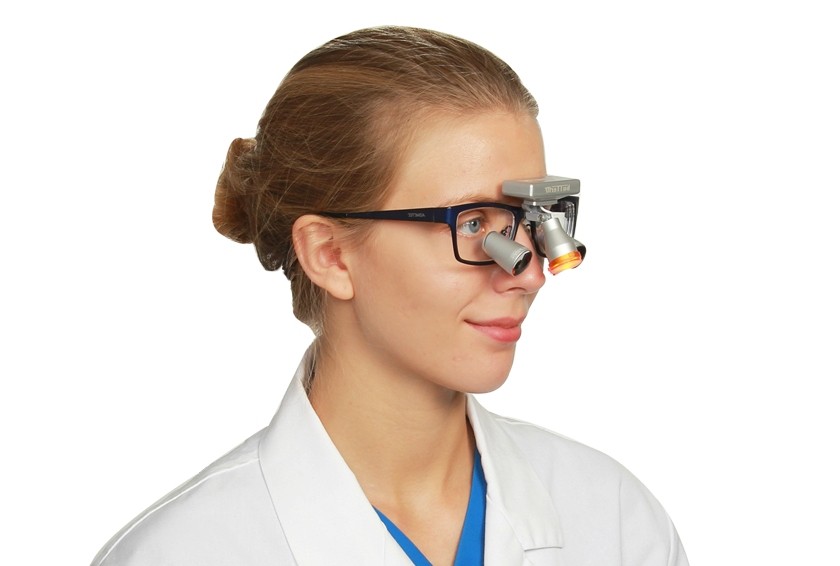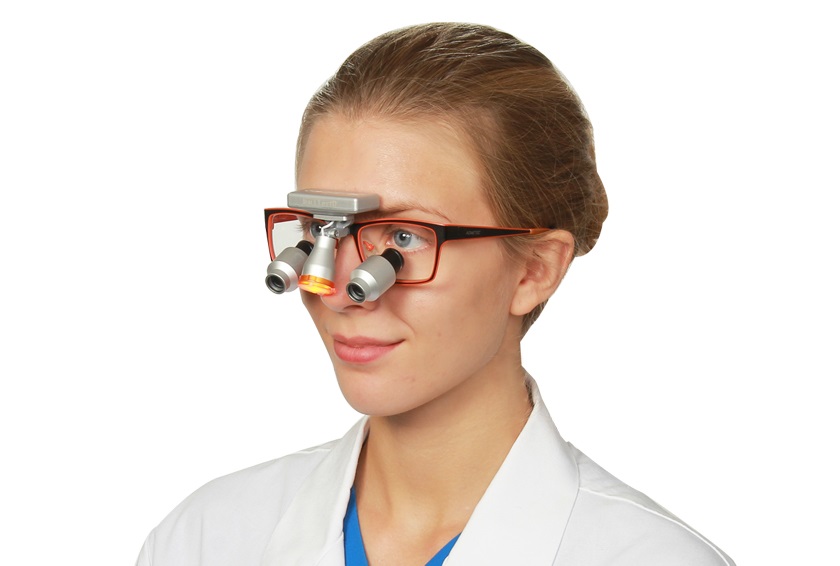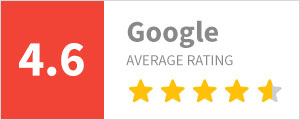How Has Dental Headlights Replaced Overhead Lights?

There are not many methods in the medical services field that are more perplexing as far as the use of lighting in dentistry is concerned. Since exactness and precision both rely upon ideal lighting, it is a significant component in the field of dentistry. Appropriately selected dental headlights and dental loupes can be employed to make an atmosphere that will permit the patient and dental specialists to feel the much-needed comfort to work. Accordingly, it is significant in a dental practice that a specific thought is placed into lighting establishments for both style and usefulness.
Besides using dental loupes, dental specialists should make use of normal light as much as possible. For example, light from hand-pieces, overhead light, and lights planned explicitly for operatories which are either seat mounted, roof mounted and fixed, or track mounted.
With the digitization of the operatory, extra plans are being made to consolidate screens on seats, extra "arms" fitted to hold trays, instruments, and so forth. However, the factor that has not altered is the requirement for an appropriately visible oral pit, precisely an illuminated oral cavity. As of now, there are two ways of thinking about the best use of light in dentistry: either to use them or don't. In the absence of an overhead light, headlamps are utilized.
Two Primary Lighting Functions In Dentistry
-
Task Lighting
This is predominantly used for explicit work, such as operatory lights (track lights, seat/operating lights, and so on). When it comes to selecting the task lighting, it is important to select a light, powerful enough to carry work in exactness. Task lighting is all the more important in cosmetic dental work, and dental restoration.
-
Ambient Lighting
By the name, ambient lighting fills in as a light for the entire workspace. It is likewise used to build up an agreeable climate that assists patients with the feeling of certainty and quietness. Having even lighting in the examination area decreases eye strain, which on the contrary is a reason for successive cerebral pains and exhaustion.
Fortunately, these situations have been resolved. At the point when you take a gander at new seat lights and dental headlights, the bulbs are gone, supplanted by light-emitting diodes (LEDs). These additionally appear in laser controlling lights, curing lights, and other hardware. Also, when you go to a retail location for bulbs for your home or office lighting, you are presently informed that they don't make the old 60W brilliant bulbs. The need for the hour has changed to LED or minimal glaring lights. For dental use, the extraordinary thing about LEDs is that each item can be customized to accommodate a certain frequency of the light spectrum.
LED Lights
A proficient workplace requires proper lighting. It may surprise you to learn that, even today, halogen overhead operatory lights are sold. However, few dental makers have accepted the new LED innovation.
Important considerations for overhead dentist lights:
- Go for aseptic designs to remain carefree and keep your concentration limited to your work, without distractions
- Lights that are easier to position with a third axial movement
- Provides an illuminating effect
- Less power utilization than other items
- Have a non-cure setting and will give the legitimate power and light color range needed in dentistry
- Power utilization is decreased to a great extent
- No significant rise in room temperature even if the light is turned on for over 8 hours

LED Dental Headlights
Clinicians are starting to perceive that the nature of light in the field of dentistry relates directly to magnification. As the degree of magnification is expanded, the field of view gets blurred.
Dential headlights can balance this issue by giving a spotlight that lessens shadows to the working field. Further, this can help lessen eye fatigue and the need to reposition the dental loupe and overhead light. Most versatile headlights available today make use of the Light Emitting Diode (LED).
Not at all like regular fiber-optic lights that make light by warming the little wire inside the glass, LEDs use semiconductor chips. Since LEDs don't use warmth to illuminate, the source of the dental headlight need not be supplanted.
Below are some points to consider while picking the best dentist operatory lights.
Brilliance
Various lights accompany various forces and most can be customized to fit with the brightness ratio of 10:1 while carrying operating procedures.
Adaptability
Operatory lights ought to be fixed considering adaptability to empower professionals who work at different light angles.
Compatibility
Guarantee that lights will work within the existing delivery system, designated angles fixed by the dentist, and cabinetry.
LED dentist headlights likewise require significantly less power and in this way can be run on batteries, which can be joined onto the headband or on the battery pack. When choosing which lights to introduce, consider the way you like to work and what light would best fit.

